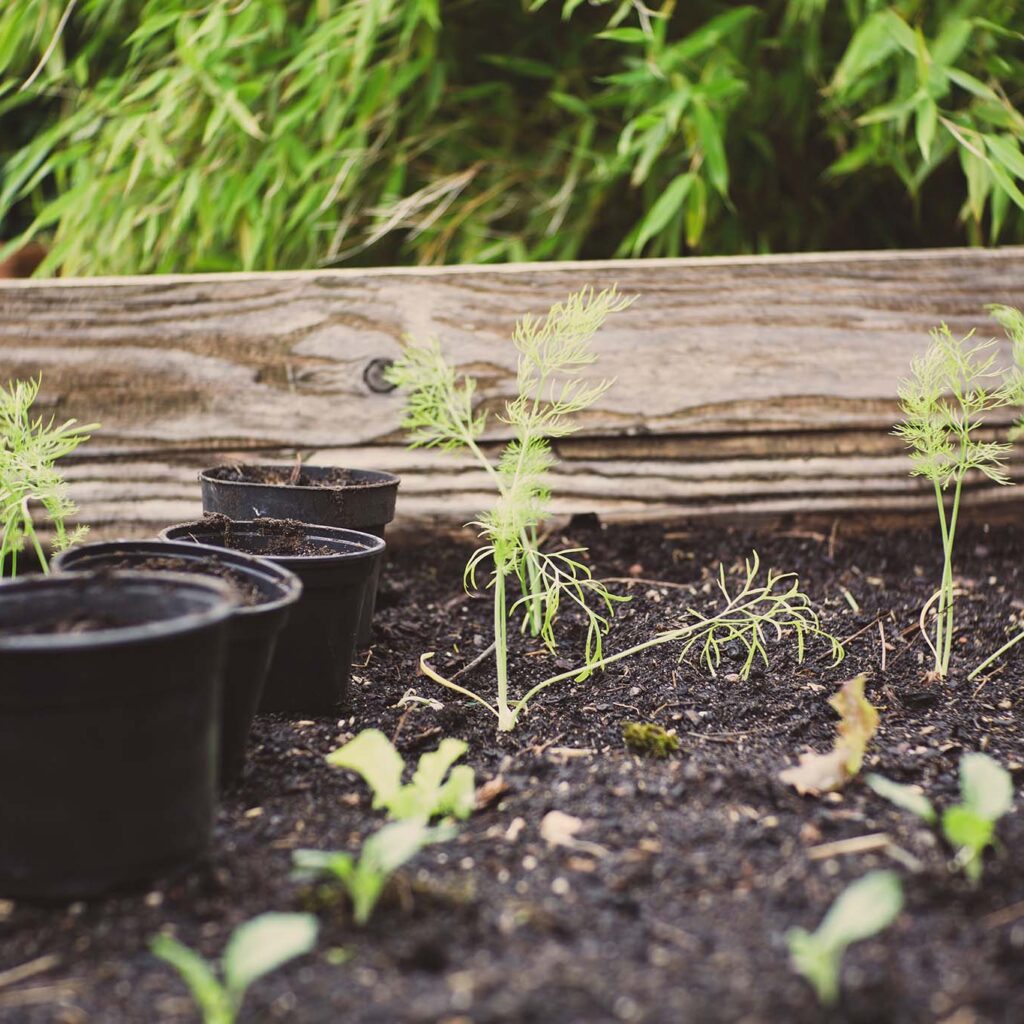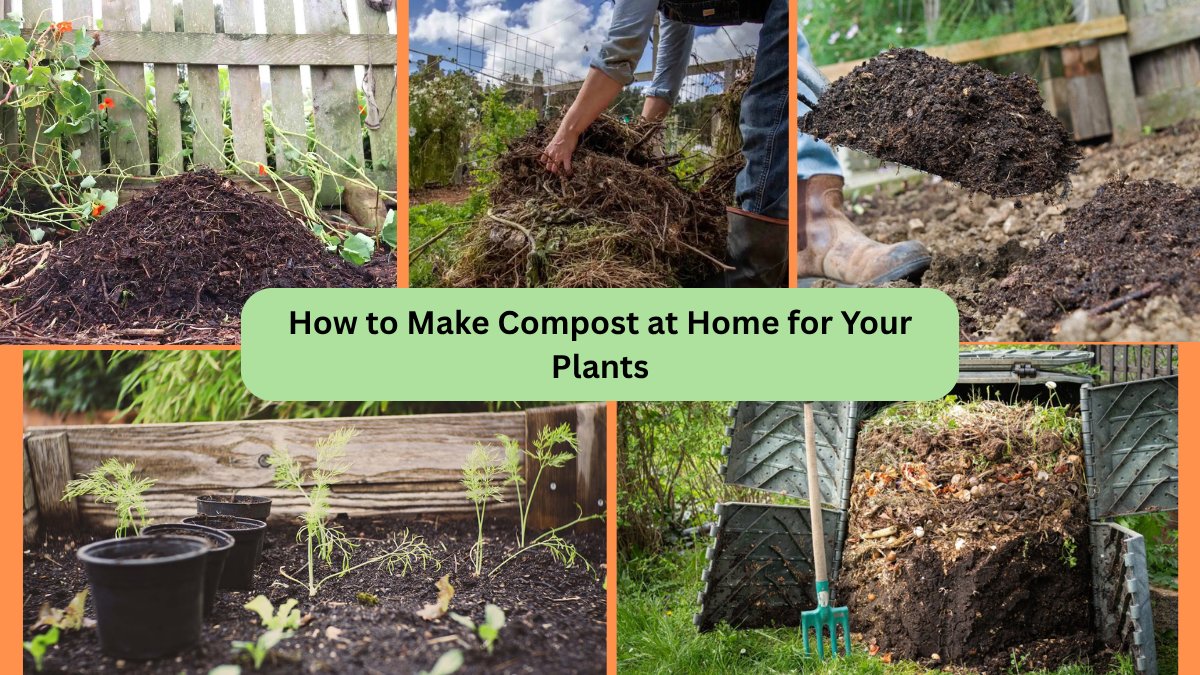Do you want to enrich your garden soil naturally while reducing kitchen and garden waste? The answer lies in one magical, eco-friendly practice: composting.
Composting turns everyday organic waste into nutrient-rich, dark, crumbly soil-like material called compost. This natural fertilizer boosts soil health, enhances plant growth, and makes your garden more sustainable.
The good news is — you don’t need a huge yard or expensive equipment to start. Whether you live in an apartment or have a spacious backyard, you can easily make compost at home with the right method.
In this detailed guide, we’ll walk you through how to make compost at home for your plants, what materials to use, what to avoid, and essential tips for successful composting.
What is Composting?

Composting is the natural process of breaking down organic materials like kitchen scraps, dry leaves, and garden waste into a rich, nutrient-packed soil amendment.
Microorganisms, worms, fungi, and beneficial bacteria break down these materials over time, creating a dark, crumbly, earthy-smelling compost that improves soil structure and feeds plants naturally.
Benefits of Compost for Plants
- Improves soil structure and texture.
- Retains soil moisture and reduces watering needs.
- Provides essential nutrients like nitrogen, phosphorus, and potassium.
- Encourages beneficial organisms like earthworms and microbes.
- Reduces household waste and landfill contributions.
- Promotes eco-friendly gardening.
Whether you grow flowers, vegetables, herbs, or houseplants — compost is a natural, safe, and effective fertilizer for them all.
Types of Composting You Can Do at Home

There are several easy composting methods for home gardeners. Choose the one that suits your space and lifestyle:
1. Traditional Outdoor Compost Pile or Bin
Perfect for backyards, this method involves creating a compost heap or using a compost bin outdoors.
2. Balcony or Small Space Composting
Use small containers or compost tumblers on balconies or patios for apartment-friendly composting.
3. Vermicomposting (Using Earthworms)
A compact, odor-free indoor method using earthworms to speed up decomposition — ideal for small homes.
4. Bokashi Composting
A Japanese technique that ferments kitchen waste using special bran. Great for kitchen counters or apartments.
What You Can Compost: The Do’s and Don’ts
Green (Nitrogen-Rich) Materials
These materials add moisture and nitrogen, essential for decomposition:
- Vegetable and fruit peels
- Tea leaves and coffee grounds
- Grass clippings
- Fresh plant trimmings
- Crushed eggshells
Brown (Carbon-Rich) Materials
These provide bulk and air pockets while balancing nitrogen levels:
- Dry leaves
- Newspaper shreds
- Cardboard scraps (without glossy prints)
- Sawdust (untreated wood)
- Straw and dry grass
Materials to Avoid in Compost:
- Meat, fish, and dairy products (attract pests)
- Oily or greasy food scraps
- Diseased plants
- Pet feces
- Synthetic or plastic materials
How to Make Compost at Home: Step-by-Step

What You’ll Need:
- Compost bin, pot, or open space (for outdoor piles)
- Kitchen and garden waste
- Dry leaves or shredded paper
- Water
- Small gardening tool or stick for mixing
Composting Process:
1. Select a Spot or Container
Choose a shaded, well-ventilated spot in your garden, balcony, or kitchen corner.
Use a compost bin, plastic tub, bucket, or create a heap directly on soil.
2. Layer Greens and Browns
- Start with a layer of dry, brown materials like dry leaves or newspaper.
- Add a layer of kitchen scraps (green materials) like vegetable peels.
- Alternate layers of greens and browns as you go.
3. Maintain Moisture
The pile should be moist like a wrung-out sponge.
If it’s too dry, sprinkle some water. If too wet, add dry leaves or cardboard.
4. Turn and Mix Regularly
Use a stick, shovel, or hand fork to stir and aerate the compost every 5–7 days.
This supplies oxygen, speeds up decomposition, and prevents odors.
5. Let it Decompose
In 6–8 weeks (or 2–3 months for colder climates), your compost will turn dark, crumbly, and smell earthy — indicating it’s ready for your plants.
How to Use Compost in Your Garden

Once your compost is ready, it’s time to boost your plants naturally:
- Mix compost into garden soil before planting vegetables or flowers.
- Top-dress potted plants by adding a thin layer of compost on the surface.
- Add compost to seed-starting soil mixes for healthy seedlings.
- Use as mulch around garden beds to retain moisture and suppress weeds.
- Mix into raised beds or vertical gardens for nutrient-rich growing soil.
Composting Tips for Success
- Chop large waste pieces into small bits for quicker decomposition.
- Avoid adding too much of one type of material — keep a balanced mix.
- If your pile smells bad, add more brown materials and turn it.
- Insects like worms, bugs, and beetles are signs of healthy compost.
- Use closed compost bins if you live in a place with rodents or pests.
Indoor Composting Idea: Vermicomposting

If you’re tight on space or want a clean, odorless indoor option, try vermicomposting.
How it works:
- Use a container with small holes for drainage and airflow.
- Add bedding (coconut coir, shredded newspaper).
- Introduce red wigglers or compost worms.
- Feed them kitchen scraps (avoid citrus, meat, and dairy).
- Harvest worm castings (black, crumbly compost) in 2 months.
Benefits:
- Space-saving and clean.
- Faster composting.
- Nutrient-dense fertilizer for houseplants and balcony gardens.
Final Thoughts
Composting is one of the simplest, most effective ways to reduce waste and enrich your plants naturally. Whether you have a large backyard, a cozy balcony, or a tiny apartment, there’s a composting method that fits your space and lifestyle.
By learning how to make compost at home, you’ll not only nourish your plants with organic, chemical-free fertilizer but also do your part in creating a healthier, more sustainable planet.
So why wait? Start saving those kitchen scraps today and turn them into black gold for your garden!





